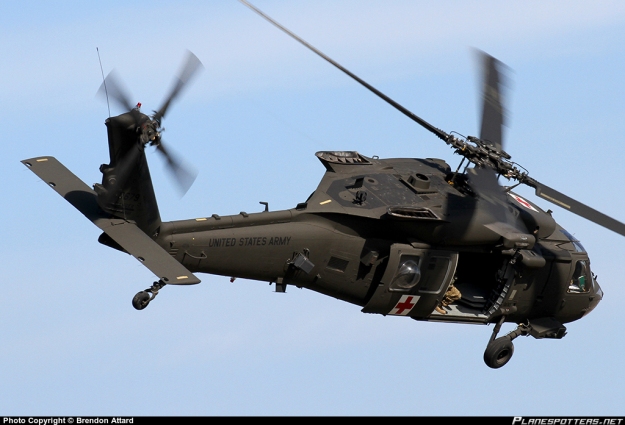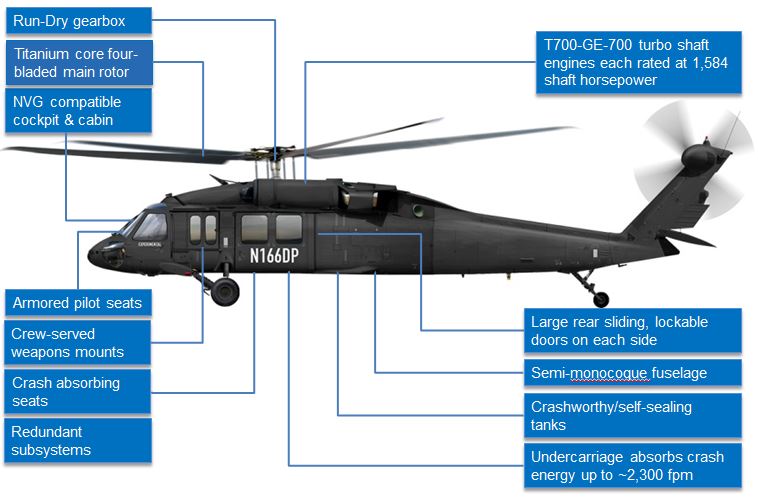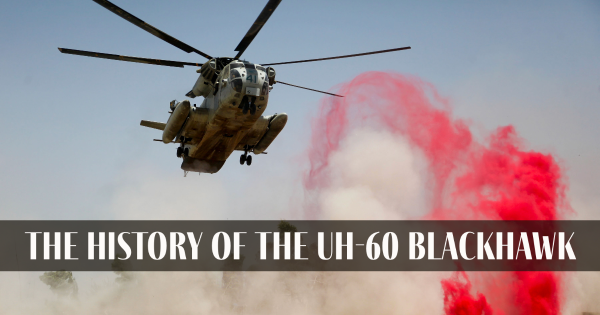Recognizing the Mechanics and Design Behind Uh 60 Helicopters
The UH-60 helicopter, generally understood as the Black Hawk, stands as a peak of modern rotorcraft innovation, symbolizing a mix of durable engineering and elaborate technicians. As we peel off back the layers of the UH-60's layout, a world of elaborate systems and meticulous engineering comes to light.
Background of UH-60 Helicopters
The history of UH-60 helicopters traces back to the late 1970s when the USA Military looked for a sophisticated and flexible utility helicopter to change its aging fleet. In action to this requirement, the Sikorsky Aircraft Firm established the UH-60 Black Hawk helicopter. Introduced in 1979, the UH-60 rapidly became a staple in military procedures due to its impressive abilities.
The UH-60 was made to master a range of missions, including army transportation, clinical emptying, electronic warfare, and unique operations. Its ability to adapt to different duties made it a beneficial asset to the united state Army and various other military pressures all over the world
Over the years, the UH-60 system has undertaken a number of upgrades and variations to boost its efficiency and keep rate with progressing objective needs. These helicopters have actually seen extensive solution in problems such as the Gulf Battle, Afghanistan, and Iraq, showcasing their dependability and versatility in diverse functional environments. The UH-60's abundant background is a testament to its long-lasting heritage as a top energy helicopter.

Engine and Power Systems
Utilizing cutting-edge propulsion technology, UH-60 helicopters are equipped with innovative engine and power systems to guarantee ideal performance and integrity in a variety of operational circumstances. The UH-60, commonly referred to as the Black Hawk, is powered by 2 General Electric T700-GE-701D engines, each capable of supplying up to 1,940 shaft horsepower. These turboshaft engines provide the essential thrust for the helicopter to carry out its objectives successfully, including army transportation, medical emptying, and combat support.

Blades System and The Rules Of Aerodynamics
How do the blades system and the rules of aerodynamics of UH-60 helicopters add to their operational performance and flight capabilities? The blades system of the UH-60 helicopter plays a crucial function in giving lift and propulsion. The UH-60 features a four-bladed, fully articulated rotor system that enables high maneuverability and stability during trip. This design enables the helicopter to execute a vast array of goals, from transport and clinical evacuation to fight procedures.
The rules of aerodynamics also play a crucial role in the performance of UH-60 helicopters. The structured fuselage and rotor blade layout reduce drag, enabling the helicopter to accomplish higher speeds and far better fuel effectiveness. The wind resistant design of the UH-60 additionally adds to its capability to run in varied environmental conditions, consisting of warm temperatures and high altitudes.
Avionics and Trip Control Equipment

In its elaborate coordination with the rotor system and aerodynamics of UH-60 helicopters, the avionics and flight control systems develop a critical network of technologies forming the airplane's functional capabilities. In the UH-60, these systems include electronic display screens, interaction radios, GPS navigation, climate radar, and auto-pilot systems.
The trip control systems of the UH-60 are accountable for equating the pilot's inputs right into the ideal modifications to the rotor system, guaranteeing stable trip image source and ability to move. These systems include hydraulic actuators, servos, and computer systems that interact to regulate the primary and tail blades, in addition to other trip control surfaces. By specifically handling the helicopter's flight characteristics, these systems make it possible for pilots to carry out a wide variety of missions, from transportation and search-and-rescue to fight procedures, with precision and self-confidence.
Function and Applications in Aviation
The role and applications of avionics and flight control systems in air travel are indispensable to ensuring the effective and secure operation of airplane, including UH-60 helicopters. Avionics systems in UH-60 helicopters include a variety of electronic systems that help in navigation, communication, tracking, and regulating different airplane functions. These systems include digital display screens, autopilot systems, interaction radios, general practitioner navigation devices, and weather radar. Flight Bonuses control systems play an important duty in maneuvering the helicopter in the air, preserving security, and making sure specific movements. The fly-by-wire innovation utilized in modern-day UH-60 helicopters translates pilot inputs into electronic signals, which are then translated by the trip control computers to change the aircraft's control surfaces. Furthermore, these systems integrate security attributes such as auto-pilot settings, surface recognition cautioning systems, and stability augmentation systems to improve the general security and functional capacities of the UH-60 helicopters in various goals, including troop transport, medical evacuation, search and rescue, and aerial firefighting.
Final Thought
To conclude, the UH-60 helicopter is a versatile airplane with a rich history and advanced design. Its engine and power systems, rotor system, the rules of aerodynamics, avionics, and flight control systems all collaborate to make it a reputable and efficient machine. The UH-60's duty and applications in air travel are huge, ranging from armed forces operations to search and rescue goals. Its continued advancement and usage show its significance in the field of aeronautics (uh 60).
In its detailed coordination with see this site the rotor system and the rules of aerodynamics of UH-60 helicopters, the avionics and trip control systems create an important network of technologies shaping the airplane's functional capacities.The flight control systems of the UH-60 are accountable for converting the pilot's inputs right into the appropriate modifications to the blades system, making certain secure flight and ability to move. Avionics systems in UH-60 helicopters include an array of electronic systems that aid in navigating, interaction, surveillance, and managing different aircraft features. In addition, these systems incorporate safety features such as auto-pilot modes, surface recognition advising systems, and stability augmentation systems to boost the overall security and operational abilities of the UH-60 helicopters in various goals, consisting of army transportation, medical discharge, search and rescue, and airborne firefighting.
Its engine and power systems, blades system, the rules of aerodynamics, avionics, and trip control systems all function with each other to make it a reliable and trusted machine.